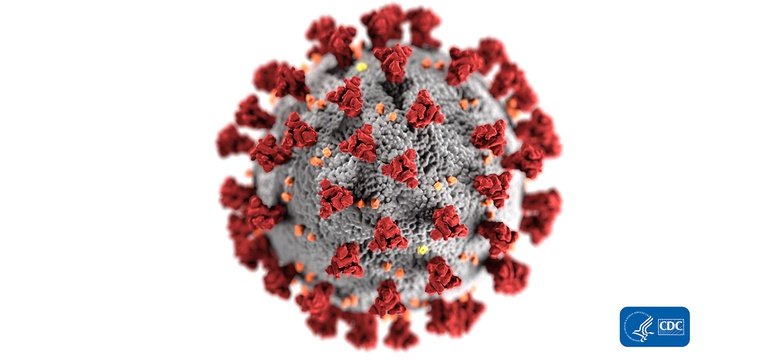Friday Stats and More
Based on the Centers for Disease Control’s COVID Data Tracker and using Thursday as the first day of the week, here is the FEHBlog’s weekly chart of new COVID cases for this year.

The Wall Street Journal reports that
The new Omicron variant was identified in more than a dozen people in at least nine states, early evidence of its presence across the U.S.
While some of the people in the U.S. who have contracted the Omicron variant of the coronavirus that causes Covid-19 had recently traveled to southern Africa, where it was first identified last week, at least two states reported community spread of the new variant. States to report Omicron cases span the country from Hawaii to California and New York.
“It’s certainly spreading in the U.S.,” said Samuel Scarpino, managing director of pathogen surveillance at the Rockefeller Foundation.
The Delta variant begs to note add “all of the other cases are mine.”
Here is a link to the CDC’s chart of new COVID hospitalizations which continues to trend up.
Here is the FEHBlog weekly chart of new COVID deaths for 2021

Oddly the number of deaths popped up last week.
Here’s the FEHBlog’s weekly new COVID vaccinations delivered and administered during the last two weeks of 2020 and this year.

In this regard, the Wall Street Journal reports that
The U.S. has plenty of Covid-19 vaccines but retail pharmacies are struggling to quickly administer them in some places.
Vaccine seekers in some states face waits of days or weeks for doses as local health officials hustle to improve access to meet surging demand. CVS Health Corp. Walgreens Boots Alliance Inc. and Walmart Inc., which are facing staffing shortages, now say they may not be able to accommodate people without appointments.
Millions of Americans are newly eligible for booster shots, and federal health officials in November recommended the vaccine for use in children as young as 5 years old. Concerns about the risks posed by the new Omicron variant also are driving more people to get vaccinated, health officials say.
An average of 1.4 million doses were administered daily in the U.S. in the week ended Thursday, a 22% increase from the previous week, which included Thanksgiving, according to the Centers for Disease Control and Prevention.
(The FEHBlog’s chart does not show a sharp increase because the government was not reporting vaccination statistics over the four day Thanksgiving weekend.)
Here is a link to the CDC’s weekly interpretation of its COVID statistics.
The Society for Human Resource Management discusses the impact of Omicron and the President’s COVID awareness program on employers.
From the influenza front, the CDC reports that “Seasonal influenza activity in the United States remains low, but in recent weeks, the number of influenza virus detections reported by clinical and public health laboratories has increased, and the percent of outpatient visits for respiratory illness has trended upward.” Next week is National Flu Vaccination Week.
From the Capitol Hill front, Federal News Network informs us that as expected,
President Joe Biden signed a continuing resolution Friday to keep funding federal government operations for another three months [precisely February 18, 2022], avoiding a government shutdown.
The passed the Senate late last night by a margin of 69-28, while the House had approved the same measure earlier in the day on a party line vote, with only one Republican voting in favor.
Federal News Network reports at length about the House Oversight and Reform Committee vote approving an Committee leadership sponsored bill to strengthen OPM (H.R. 6066). The article notes that today OPM Director Kiran Ahuja “spoke at a virtual discussion hosted by NAPA. She reiterated that rebuilding the agency is one of her top priorities. In the last year, OPM has hired about 340 new employees, Ahuja said.”
From the pharmacy / PBM front —
- Forbes interviews Walgreens CEO Roz Brewer about her primary care oriented strategy for the large pharmacy chain.
- Fierce Healthcare tells us that
Express Scripts has launched a new solution that aims to integrate prescription discount card pricing into members’ existing benefits.
Through the new Right Price offering, a member who is eligible for savings through a discount card will automatically see those savings applied at the pharmacy counter. Matt Perlberg, senior vice president of supply chain at Express Scripts, told Fierce Healthcare that the pharmacy benefit manager most often sees these discounts come into play for members who have yet to meet their deductible.
For about 2% of claims, members who are purchasing generic drugs but have not yet met the deductible may find these coupon cards lead to a lower price than their drug benefits, Perlberg said.
In other strategy news, Beckers Payer Issues reports that
UnitedHealth Group CEO Andrew Witty said during a Forbes Annual Healthcare Summit discussion he is exploring how the company’s payer and provider branches can work together more closely.
The initiative aims to provide government and employer customers with more comprehensive offerings, Mr. Witty said Dec. 2, according to Forbes.
Mr. Witty pointed to developing mental health strategies as one avenue for combined growth.
That makes sense to the FEHBlog.








